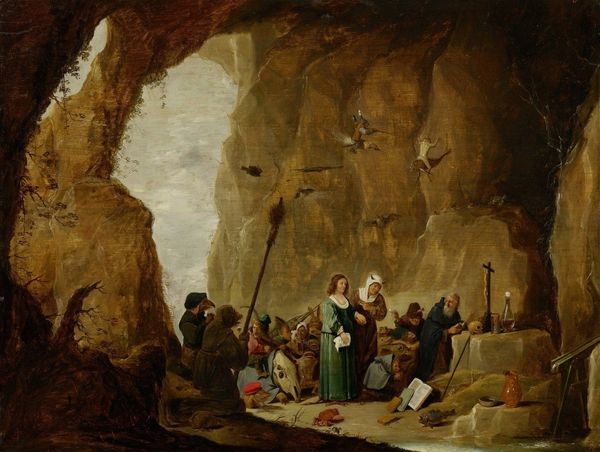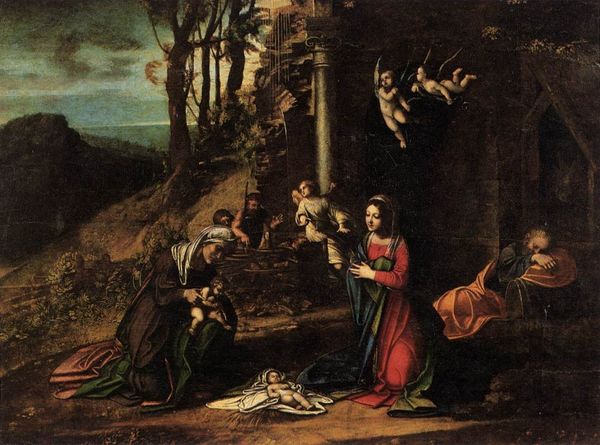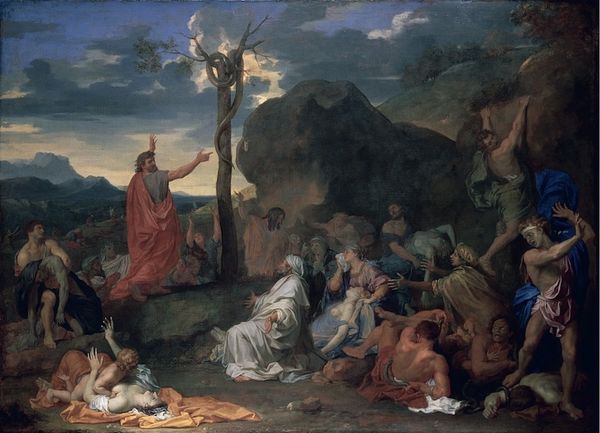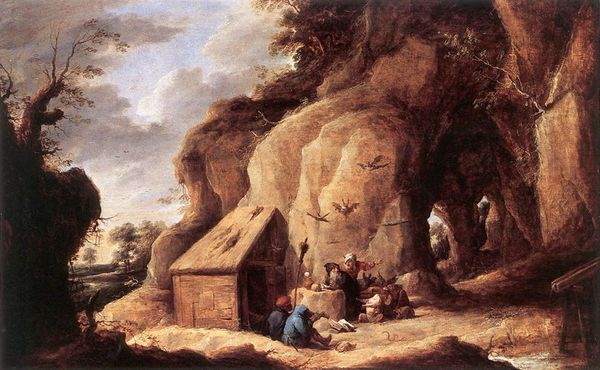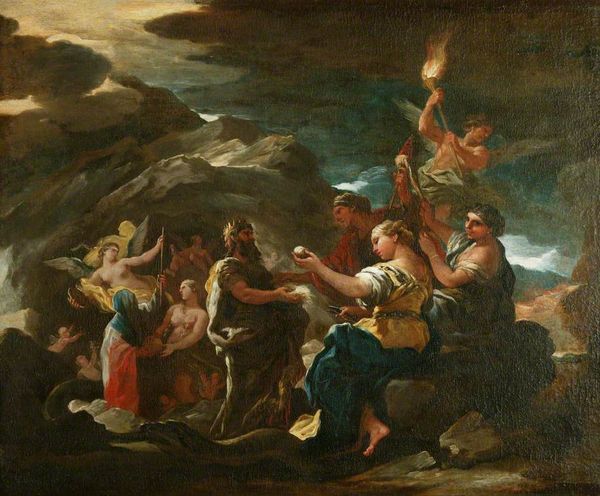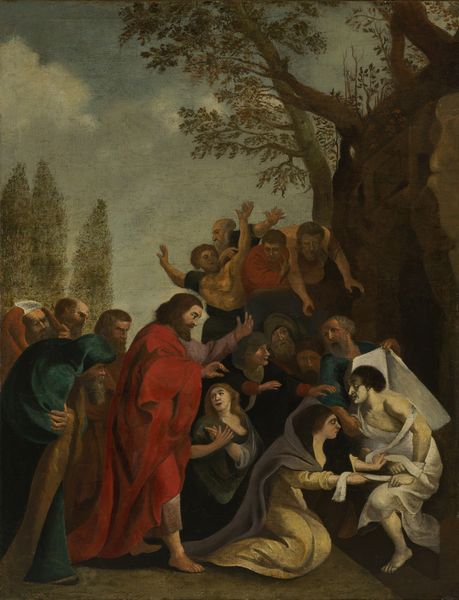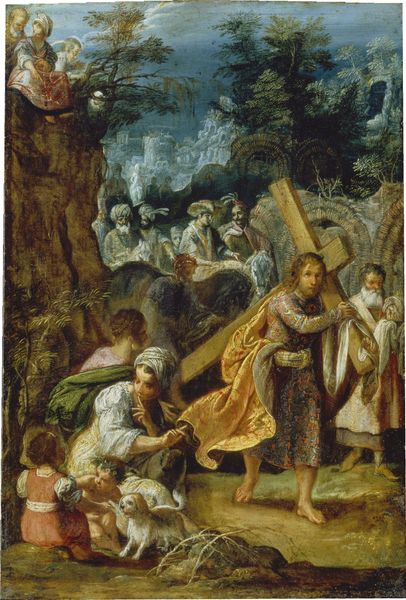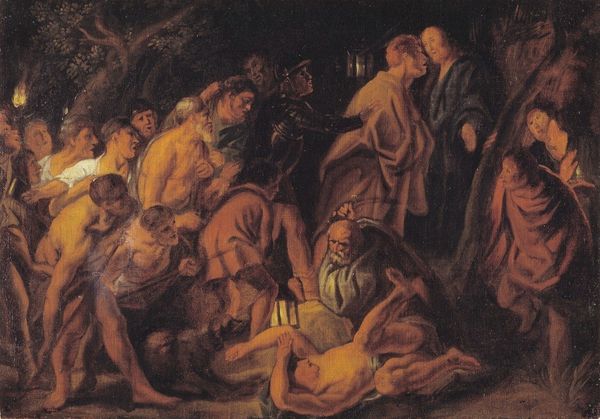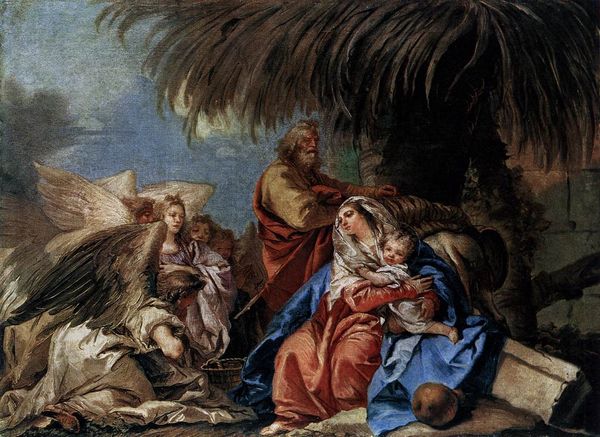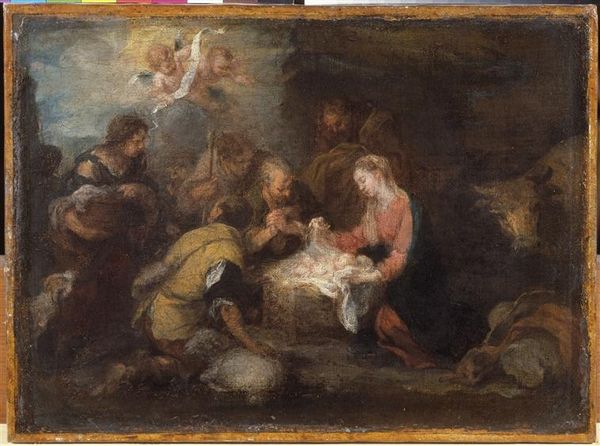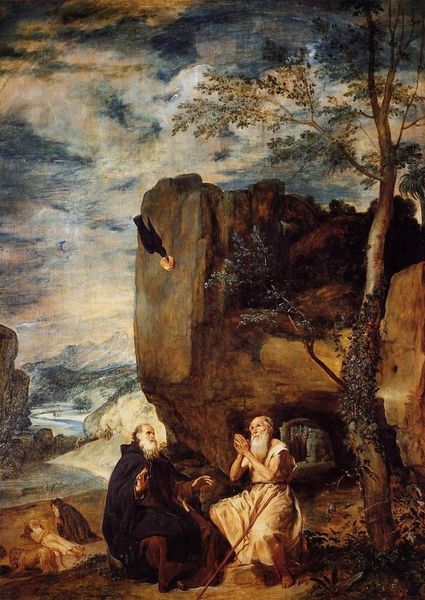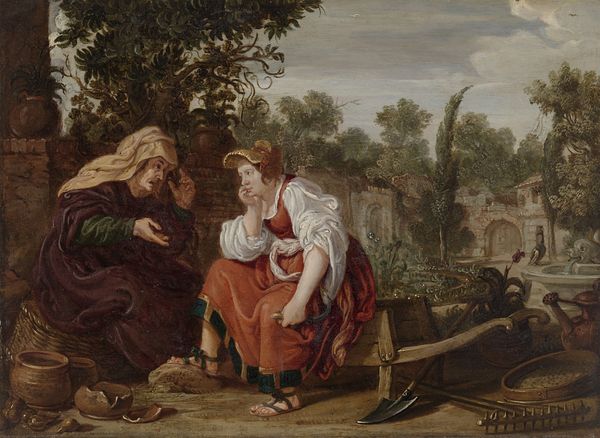
#
charcoal drawing
#
possibly oil pastel
#
oil painting
#
acrylic on canvas
#
underpainting
#
christianity
#
painting painterly
#
watercolour illustration
#
surrealist
#
charcoal
#
watercolor
#
christ
Dimensions: 36 x 47 cm
Copyright: Public domain
Editor: Here we have David Teniers the Younger’s “The Temptation of St. Anthony” from 1645. The medium appears to be oil on, possibly, wood. The overall mood feels unsettling, doesn’t it? Almost like a bad dream. How do you interpret this work, especially regarding its historical context? Curator: It's crucial to remember that this piece exists within a very specific historical and social context – the 17th century, which saw the rise of witch hunts and intense religious anxieties. Teniers’s depiction of St. Anthony’s temptation isn’t just a biblical story, it's a reflection of societal fears around heresy, witchcraft, and the subversion of religious authority. What do you make of the gathering inside the cave, the hybrid creatures, and the specific placement of St. Anthony in relation to them? Editor: It feels like St. Anthony is being confronted with representations of everything he’s supposed to resist—worldly pleasures, challenges to religious doctrine…it’s quite intense. Are those figures meant to be literal demons or symbolic representations of temptation? Curator: I see it as both. On the surface, it's a literal portrayal of demons as understood at the time. However, it's impossible to ignore that this narrative coincided with a period of extreme gendered violence, especially against women accused of witchcraft. In this regard, aren't the demons embodiments of marginalized communities, fears about the female body, and anxieties related to the disruption of social hierarchies? Editor: So, it’s not just about personal faith but also about societal control? Curator: Precisely. And that's why art history must be engaged with feminist theory, critical race theory, and cultural studies. Art reflects and shapes those discourses. Editor: That makes me see it in a completely different light. I thought it was just a religious painting. Curator: Exactly! Seeing art through an intersectional lens allows us to decode not just the artwork itself, but also the intricate power structures embedded within its time. Editor: This really brings so many social factors together and clarifies my interpretation of the work. Thank you for your perspective.
Comments
No comments
Be the first to comment and join the conversation on the ultimate creative platform.
